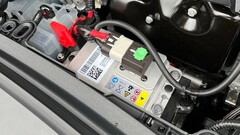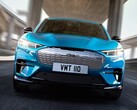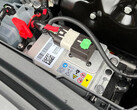Electric cars like the 2020 Tesla Model 3 experienced only 4.9 mechanical breakdowns per 1,000 vehicles on the road, while gas-powered cars from the same model year had a failure rate of 6.9 such incidents in a first of its kind EV reliability study that doesn't rely on subjective owners' reports. Both are very low numbers as the cars in the comparison are practically new, yet the simpler construction of EVs put them at a 30% lower chance for a significant breakdown even in this favorable scenario.
The storied German national road assistance organization ADAC included electric cars in its popular reliability report for the first time as there are now enough EVs on the road to make a viable comparison. After all, Tesla's Model Y was the bestselling vehicle there in the past couple of quarters.
ADAC tried to compare apples to apples by picking 3-year old cars as that's when EVs started to meet their registration quantity criteria for inclusion in the reliability report. As can be expected, electric cars had six times less drivertrain problems than internal combustion engines with their numerous moving parts. The reliability advantage was visible in most every category but - ironically - the auxiliary electrical system.
In fact, the only element in electric cars that proved to be as prone to failures as the one in gas-powered vehicles was the low-voltage circuit where Tesla only recently moved from lead-acid to Li-ion batteries. In EVs, they are used for features like power windows, lights, or the infotainment system, and there were 2.5 failures per thousand active vehicles in ADAC's report, the same as ICE cars. In fact, if you remove the low-voltage battery failures - which can be due to both defective units or owner negligence - from the equation, the EV component failure rate would halve.
According to ADAC's findings "only two areas stand out as significantly different when comparing the frequency of defects in electric cars and cars with combustion engines: keys, locks, immobilizer and the engine, management and high voltage area (HV) system. The difference in problems with the drive (the HV system of the electric car is the counterpart to the drive of the combustion car) can probably be attributed to the significantly simpler technical structure of an electric motor. In the event of breakdowns or problems in connection with the key, it is reasonable to assume that contactless versions (keyless go) are much more common in electric cars and that the reason for the breakdown "key in the car" (driver locked out) is much less common."
As mentioned, Tesla stopped using 12V lead-acid batteries in the Model Y and Model 3 only last year, equipping all of its new cars in the US with AMD Ryzen chips instead of slower Intel Atoms, and swapping the old low-voltage batteries that were prone to sudden failures with new Li-ion packs. It would be interesting to follow ADAC's real-life reliability report in the coming years, now that it includes electric cars, as they age and gain a larger share of the traffic mix on the road.






















